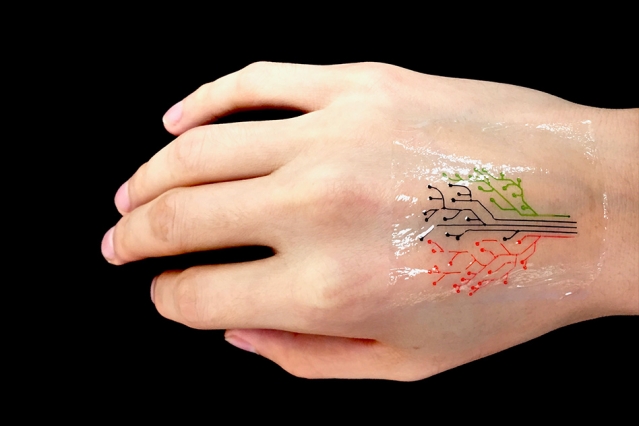You’ve heard of white ink tattoos and UV ink tattoos, but now, there’s a new innovation in the works when it comes to body art.
Researchers at the Massachusetts Institute of Technology have developed “living ink” tattoos, which contain genetically programmable living cells.
When those living cells are exposed to different chemicals or molecular compounds, they react, causing parts of the tattoo to light up.
“A variety of different switches and buttons control the information flow in electronic devices. Genes of a living organism are controlled in a similar way — a specific chemical stimulus turns ‘on’ the production of proteins,” an MIT video explains. “In contrast to electronics, living beings can easily respond to chemical stimuli.”
Bacteria cells make up the tattoo, which the researchers were able to 3D print into the shape of a tree.
Each branch of that tree is sensitive to a different reactor, and when the tattoo is placed on skin that has also been exposed to that same reactor (like a certain chemical), the corresponding branch alights.
In the future, according to the university, “researchers may use the team’s technique to print ‘living computers’ — structures with multiple types of cells that communicate with each other, passing signals back and forth, much like transistors on a microchip.”
So what benefit can these living computers bring about when on our skin as tattoos? They fit into the same technological trend, researchers say, as wearable sensors and interactive displays.
The technique of 3D printing living cells is revolutionary in itself; though the idea isn’t new, other researchers haven’t been able to execute it very successfully.
“It turns out those cells were dying during the printing process,” researcher Hyunwoo Yuk said in a statement. “They are too weak, and they easily rupture.”
Now that they’ve developed a way to print the cells and keep them alive, they can program tattoos to be responsive to all sorts of things.
Living cells can be engineered, researchers explained, to sense environmental chemicals and pollutants and even changes in pH or temperature. That means your future tattoos may do more than show off your style — they could alert you to different environmental changes.


























